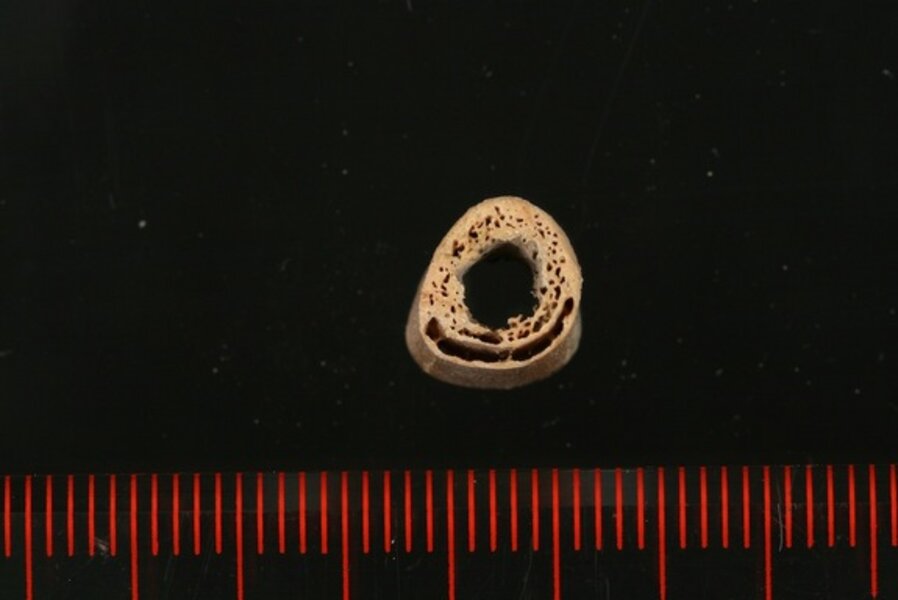DNA study of Siberian skeleton links Europeans to Native Americans
Loading...
The DNA gleaned from two ancient Siberian skeletons is related to that of modern-day Native Americans and western Eurasians, new research suggests.
The genetic material from the ancient Siberians provides additional evidence that the ancestors of Native Americans made the arduous trek from Siberia across the Bering Strait into the Americas.
But it also reveals there were multiple waves of migrations in Asia around this time, said Mark Hubbe, a biological anthropologist at The Ohio State University who was not involved in the study. [Top 10 Mysteries of the First Humans]
"This brings a new level of complexity to what we think happened in Asia," Hubbe told LiveScience.
Ancient migrations
Several genetic clues indicate that Native Americans came from a population that once inhabited Siberia and crossed the Bering Strait between 20,000 and 15,000 years ago.
Between 1928 and 1958, Russian scientists excavated a Siberian site in Mal'ta, Russia, near Lake Baikal, and unearthed a trove of Venus figurines along with the skeleton of a juvenile, all dating back approximately 24,000 years. The figurines were intriguing, because they were similar in style to ones made by European hunter-gatherers.
European relatives
To trace the ancestry of these ancient people, Maanasa Raghavan, a researcher at the University of Copenhagen in Denmark, and colleagues managed to extract DNA from the ancient skeleton.
The team found that the mitochondrial DNA, or genetic material carried in the cytoplasm of cells that is passed through the maternal line, came from a lineage known as U, which is rare or extinct now, but was once common in hunter-gatherers from Europe during the Paleolithic Period.
The team also sequenced the male sex chromosome (Y chromosome), which traces the paternal lineage of the skeleton. On the paternal side, the ancient boy came from a lineage known as R, which is now found in southern Siberia and western Eurasia. The R lineage is also a sister group to one common in Native Americans.
The researchers estimate that between 14 and 38 percent of Native American ancestry could come from this ancestral population, with the remaining portion coming from ancient East Asians.
DNA from a 17,000-year-old skeleton found in south central Siberia showed signs of being from the same genetic lineage as the Ma'lta specimen.
Previously, researchers had thought that people migrated from Europe into east Asia, and then entered Siberia from the south in a fairly linear expansion, Hubbe said. But the new results suggest the Siberian inhabitants may have come from the West, he said. That suggests Asia experienced multiple, crisscrossing waves of migration, he said.
However, because the skeletons are so old, it's important to rule out the possibility that the DNA was contaminated, Theodore Schurr, an anthropologist at the University of Pennsylvania who was not involved in the study, wrote in an email.
And having so few ancient samples paints a very limited picture of a complicated genetic history.
"Although these results are intriguing and important, we should be cautious in inferring too much from just two genomes," said Jennifer Raff, an anthropologist at the University of Texas at Austin who was not involved in the study. "I would certainly like to see a more geographically and temporally widespread sampling of Siberian genomes in order to better understand their population history."
The findings were published today (Nov. 20) in the journal Nature.
Follow Tia Ghose on Twitter and Google+. Follow LiveScience @livescience, Facebook & Google+. Original article on LiveScience.
- Image Gallery: Our Closest Human Ancestor
- History's 10 Most Overlooked Mysteries
- Mummy Melodrama: Top 9 Secrets About Otzi the Iceman
Copyright 2013 LiveScience, a TechMediaNetwork company. All rights reserved. This material may not be published, broadcast, rewritten or redistributed.





